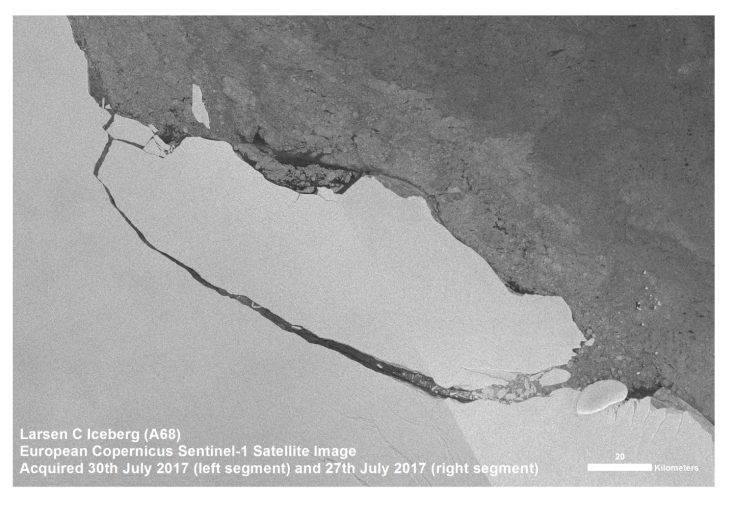Watch trillion-ton iceberg break away from the Antarctica ice shelf in stunning timelapse
The iceberg, dubbed A-68, is 5,800 square km in area, roughly four times the size of London.

Remember the massive, trillion-ton iceberg that broke off from Antarctica's Larsen C ice shelf?
A stunning, new timelapse from a glaciologist shows how the massive block of ice developed and finally broke off in July.
The iceberg, dubbed A-68, is 5,800 square km in area, roughly four times the size of London. A crack in the ice shelf developed over a period of months before reaching the tipping point when the iceberg broke off.
We've seen several images of the crack over the past few months, but Adrian Luckman, a glaciologist at Swansea University, has done something creative.
The researcher has used nine months' satellite images to create a stunning timelapse showing how the crack started developing and how the iceberg finally broke off.
Luckman tweeted the timelapse in the form a gif, which was spotted and slowed down to a 10-second video by Business Insider.
Nine months of #ESA_EO #Sentinel1 data compressed into a couple of seconds. Bon voyage A68. pic.twitter.com/AoiR9BPWri
— Adrian Luckman (@adrian_luckman) December 13, 2017
As seen in the clip created from images taken by European Space Agency's Sentinel-1 satellite, the rift developed from south to north from March and by mid-July it was big enough for the iceberg to split. The rest of the clip, captured over the following months, shows how A-68 bumped into the ice shelf before finally drifting away in the Weddell Sea.
The iceberg will eventually melt, but it will be a long time before we see its impact on sea levels.





















